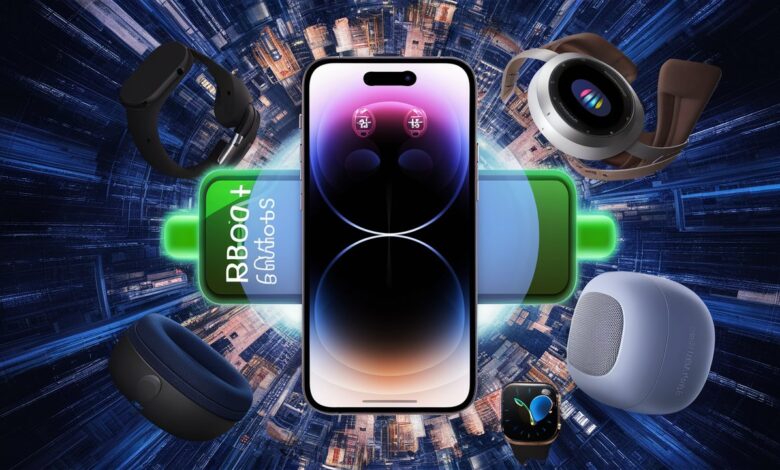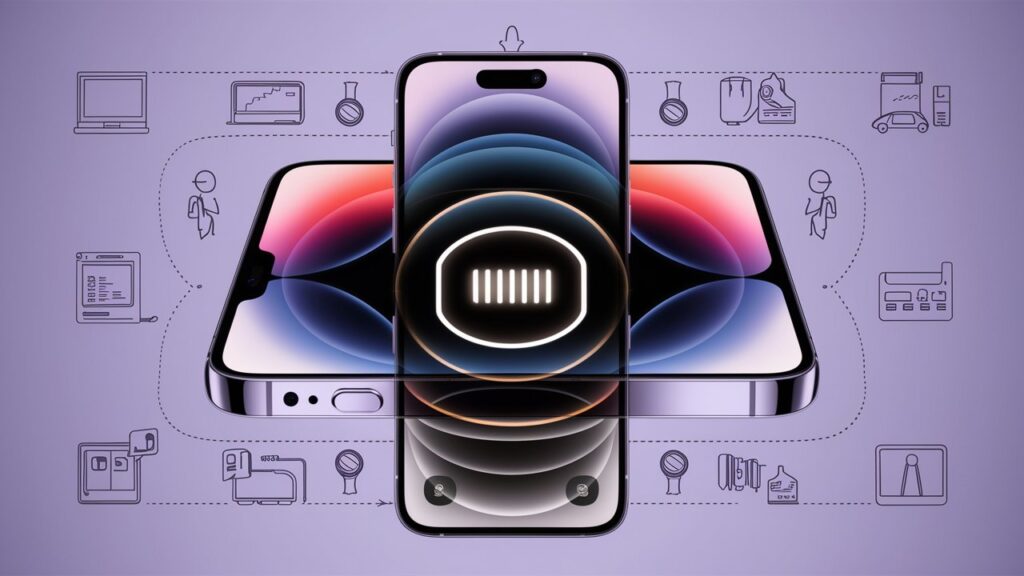The Unmatched Endurance: Exploring iPhone 15 Plus Battery Life

Introduction
The iPhone 15 Plus redefines smartphone longevity, merging Apple’s hardware efficiency with a purpose-built design. Positioned as Apple’s battery endurance champion prior to the iPhone 16 series, it addresses a universal pain point: the anxiety of constant charging. With a 4,383 mAh battery 48, advanced power management from the A16 Bionic chip, and intelligent software optimizations, this device consistently delivers up to 26 hours of video playback or 100 hours of audio playback 310. For users prioritizing all-day (or multi-day) reliability, the 15 Plus isn’t just an option—it’s a benchmark.
1. Hardware Engineering: The Foundation of Efficiency
The iPhone 15 Plus leverages a meticulously crafted hardware ecosystem to maximize battery performance. Its 4,383 mAh lithium-ion battery 48 is slightly larger than its predecessor’s, but the real magic lies in Apple’s A16 Bionic chip (4nm architecture). This processor balances raw power with efficiency, using a 6-core CPU split between high-performance and energy-sipping cores 314. Unlike the Pro models’ A17 Pro, the A16 avoids the excessive heat generation that can degrade battery efficiency during sustained loads 16.
The 6.7-inch Super Retina XDR OLED display also plays a critical role. While it lacks a 120Hz ProMotion refresh rate (staying at 60Hz), it compensates with exceptional brightness (up to 2,000 nits peak outdoor) and precision power gating. Each pixel is individually lit, reducing backlight waste compared to LCD panels 314.
2. Real-World Endurance: Beyond Spec Sheets
Lab tests only partially capture the 15 Plus’s stamina. In controlled benchmarks:
- It achieved a DXOMARK Battery Score of 131, excelling in autonomy (2 days 16 hours) and efficiency 4.
- Business Insider’s stress test (blending 3D gaming, video streaming, and music playback) left the battery at 73%—surpassing the 15 Pro Max (69%) and most Android rivals 16.
Real-world usage patterns reveal even more impressive results:
- Light users (1–2 hours screen time daily) often achieve two full days per charge 116.
- Heavy users (gaming, navigation, video recording) reliably reach bedtime with 10–20% remaining after 18+ hours of use 1.
Table: iPhone 15 Plus vs. Key Competitors in Battery Performance
| Model | Battery Capacity | Video Playback (Hours) | Stress Test Result |
| iPhone 15 Plus | 4,383 mAh | 26 | 73% remaining |
| iPhone 15 Pro Max | 4,422 mAh | 25 | 69% remaining |
| Samsung S23 Ultra | 5,000 mAh | 22 | ~65% remaining |
| iPhone 14 Plus | 4,323 mAh | 20 | 73% remaining |
| [Data compiled from citation:3, citation:8, citation:9] |
3. Charging Capabilities: Speed and Flexibility
Despite its large battery, the 15 Plus supports pragmatic charging options:
- Wired Fast Charging: With a 20W+ USB-C adapter, it reaches 50% charge in 30 minutes and a full charge in 1 hour 34 minutes 414. Note that Apple’s 30W charger offers no speed advantage over 20W, as power management throttles input to preserve longevity 14.
- Wireless Options: MagSafe and Qi2 support up to 15W, while standard Qi caps at 7.5W 1016.
- Reverse Wired Charging: A niche but useful feature for topping up accessories (e.g., AirPods) at 4.5W 14.
The transition to USB-C (mandated by EU regulations) simplifies cable clutter but uses USB 2.0 speeds (480 Mb/s). This won’t affect charging, but data transfers are slower versus the Pro’s USB 3.2 168.

4. Software Optimization: iOS’s Role in Power Management
iOS 17 (and upgradable to iOS 18) includes background task throttling and adaptive brightness to reduce drain. Key features:
- Low Power Mode: Cuts non-essential processes when battery dips below 20%.
- Optimized Charging: Learns usage patterns to delay charging past 80% overnight, reducing lithium degradation 1016.
- Battery Health Dashboard: Tracks capacity loss and cycle count (Apple rates the battery for 1,000 cycles before hitting 80% health) 12.
Users report 3–5% capacity loss after 6–8 months with typical use. Aggressive charging habits (e.g., frequent 0–100% cycles) may accelerate this 12.
5. Comparative Advantage: Why It Outlasts the Pros
The 15 Plus’s battery outperforms even the 15 Pro Max despite similar sizes due to:
- Lower-Power Display: The 60Hz refresh rate consumes less energy than the Pro’s 120Hz LTPO 1416.
- Efficient Chipset: The A16 Bionic, while less powerful than the A17 Pro, generates less heat under load—preventing thermal throttling and energy waste 116.
- Fewer Background Processes: Lacking the Pro’s always-on display and advanced camera systems, it idles more efficiently 16.
Conclusion: The Ultimate Battery-Centric iPhone
The iPhone 15 Plus isn’t just about large screens; it’s a calculated trade-off where Apple sacrifices Pro-tier specs for unmatched endurance. At $899, it delivers 30% longer battery life than the base iPhone 15 and out-persists premium rivals like the Galaxy S23 Ultra 16. For travelers, power users, or anyone tired of outlet-hunting, it remains a compelling choice—even as newer models emerge. Its legacy proves that in an era of diminishing returns, battery life remains a revolution.
Frequently Asked Questions (FAQ)
Q1: How many years will the iPhone 15 Plus battery last before degrading?
Apple designs it to retain 80% capacity after 1,000 full charge cycles 12. With average use (1–1.5 cycles/day), this translates to 2.5–3 years before noticeable degradation.
Q2: Does fast charging damage the battery?
All lithium-ion batteries degrade, but Apple’s Optimized Charging mitigates this. For best results, use 20W+ USB-C PD chargers and avoid constant 100% saturation 1216.
Q3: Why does my iPhone 15 Plus battery drain faster sometimes?
Background processes (iOS updates, location services), extreme temperatures, or weak cellular signals accelerate drain. Reset settings or check Battery Health for app-specific issues 10.
Q4: Can I replace the battery?
Yes. Apple offers battery service for a fee when capacity falls below 80%. Third-party replacements may disable battery health tracking 12.
Q5: Is the 60Hz display a dealbreaker for battery life?
Ironically, no. The 60Hz panel is a key reason for its endurance versus 120Hz Android phones. Gamers or scroll-heavy users may notice motion smoothness, but most prioritize the extra hours 1416.



